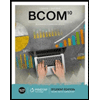Group Assignment Lululemon vs Athleta - Financial Analysis
docx
School
Utah Valley University *
*We aren’t endorsed by this school
Course
6150
Subject
Business
Date
Jun 18, 2024
Type
docx
Pages
21
Uploaded by KidBookPelican45
1
Group Assignment: Lululemon Financial Analysis
FNCE 623: Financial Management
June 21
st
of 2023
2
Table of Contents
Executive Summary
...................................................................................................................................
2
Introduction
...............................................................................................................................................
3
Lululemon Ratio and Trend Analysis
......................................................................................................
4
Liquidity ratios
......................................................................................................................................
4
Analysis of Liquidity Ratios
.....................................................................................................................
4
Analysis of the Solvency Ratios
...............................................................................................................
5
Efficiency Ratios
....................................................................................................................................
5
Analysis of the Efficiency Ratios
..............................................................................................................
6
Profitability Ratios
................................................................................................................................
6
Analysis of the Profitability Ratios
.......................................................................................................
6
Lululemon Financial Situation
.................................................................................................................
7
Common-size Balance Sheet and Income Declaration Analysis
.........................................................
7
Lululemon’s Financial Position Comparison with Athleta
...............................................................
10
Industry Ratio Comparisons
..................................................................................................................
10
Peer group analysis
..............................................................................................................................
11
Brand Positioning and Strategy
......................................................................................................
11
Financial Performance
....................................................................................................................
11
Market Presence and Expansion
....................................................................................................
12
Recommendations
...................................................................................................................................
12
Appendix
..................................................................................................................................................
15
3
Executive Summary
This report thoroughly analyses Lululemon's fiscal performance, growth prospects, and market tendencies. Lululemon Athletica Inc. has achieved tremendous sales and profitability growth over the last five years, owing to the popularity of its high-quality athletic goods and strong brand attraction. The organization's high-priced strategy and focus on internally run stores
and direct-to-consumer sales channels have contributed to its success in maintaining a sufficient gross margin and increasing influence over branding and distribution. While Lululemon's recent $500 million purchase of Mirror was viewed as a disappointment, the company's overall financial statement remains healthy, despite an unfavorable net debt position. However, there are worries about rising inventories and accounts receivable, demanding close monitoring to ensure adequate inventory management and collection operations. The study identifies areas for improvement, such as improving inventory management, optimizing accounts receivable, prioritizing profitability, overcoming acquisition barriers, and investigating potential market and brand growth opportunities. By implementing these recommendations, Lululemon can strengthen its financial performance, manage risks, and capitalize on its tremendous brand reach.
Introduction
Lululemon is a renowned sportswear company recognized for its top-notch and
fashionable active wear. Established in 1998 in Vancouver, Canada, by Chip Wilson, the
company initially concentrated on yoga-inspired attire (Kosbab, 2021). Lululemon rapidly
gained fame for its groundbreaking designs and technical textiles, attracting fitness enthusiasts
and fashion-forward individuals. Lululemon additionally offers a range of embellishments,
encompassing handbags, hats, and yoga rugs, to enhance its apparel assortment.
One of Lululemon's main competitors is Athleta, a branch of Gap Inc. Athleta, a women's
athletic apparel label founded in 1998. It focuses on empowering women through its
merchandise and aims to inspire a community of dynamic women (Chaffey et al., 2023). Athleta
offers an extensive range of athletic attire, from yoga trousers and tights to swimwear and
outerwear. While both Lululemon and Athleta target similar customer groups, Lululemon has
Your preview ends here
Eager to read complete document? Join bartleby learn and gain access to the full version
- Access to all documents
- Unlimited textbook solutions
- 24/7 expert homework help
4
traditionally positioned itself as a luxury brand, commanding higher price ranges (Cruz, 2020).
In contrast, Athleta provides more affordable alternatives without compromising on quality.
Lululemon has effectively capitalized on this tendency by delivering high-performance
attire that combines style and functionality (Grabner, 2019). Lululemon's triumph can also be
credited to its robust brand identity and community involvement. The company fosters a feeling
of belonging through various initiatives, such as sponsoring fitness events and collaborating with
influencers and ambassadors (Brahim, 2022).
In recent times, Lululemon has broadened its product offerings beyond conventional
sportswear. It has ventured into new categories, such as menswear and self-care products,
expanding its customer base. The company has also embraced online commerce and established
a strong internet presence, enabling customers to shop from anywhere conveniently (Cruz,
2020). The company has committed to reducing its environmental impact by employing
sustainable materials, implementing ethical sourcing practices, and investing in recycling and
waste reduction initiatives. This dedication resonates with customers who prioritize
environmentally friendly brands.
Lululemon Ratio and Trend Analysis
Liquidity ratios
Liquidity ratios help identify whether a company can settle its short-term obligations
using its available liquid assets. (We need to explain where the information comes from and the
period, we are using the information from)
Table 1: Liquidity ratios
Short-Term Solvency (liquidity)
Jan 31/19
Jan 31/20
Jan 31/21
Jan 31/22
Jan 31/23
Current Ratio
2.8558
2.9141
2.4054
1.8607
2.1173
Quick Ratio
2.0469
2.0783
1.6725
1.1729
1.1474
Cash Ratio
1.7610
1.7625
1.3027
0.8965
0.7739
Net Working Capital
0.4455
0.3619
0.2966
0.2447
0.2974
Interval Measure (days)
469.7982
494.5734
471.6521
419.4871
364.4833
Analysis of Liquidity Ratios
As shown in Table 1
above, the company's current ratio was 2.12 in 2023, which
represents the company's healthy financial status. Looking at the past five years, the company's
5
current ratio has experienced a decrease, with an increase experienced in 2023. This specifies a
strong liquidity station, as the corporation has adequate current assets to encounter its short-term
commitments. The company's quick ratio has experienced a decrease since 2020. However, the
company has managed to maintain a positive and a higher quick ratio, as shown in Table 1
. This
ratio provides a more conservative measure of liquidity, considering that inventory might not be
easily converted to cash (Kliestik et al., 2020). Lululemon's quick ratio suggests that the
company can cover short-term liabilities even after excluding inventory (Baalbaki et al., 2019).
Based on the liquidity ratios, Lululemon demonstrates a strong liquidity position.
Lululemon's cash ratio was 0.77 in 2023, representing a low cash ratio. This might mean the
company has a low amount of cash to pay for its short-term liabilities. The company's net
working capital ratio shows a decrease. This shows a decrease in the company's ability to repay
its creditors. Solvency Ratios
These are the ones in charge of measuring a company’s cash flows, assessing its
capability to maintain its position in the market. It makes a comparison between cash flow
capacity and liabilities (Hayes, 2023).
Analysis of the Solvency Ratios
Lululemon experienced a higher total debt ratio in 2022, which decreased in 2023. The
decrease in the total debt ratio shows the company’s reduced dependency on debts to finance its
activities. The debt/equity ratio was 0.78 in 2023, showing a positive shareholder's equity. The
lesser the debt/equity ratio, the higher the shareholder's equity. The Times interest earned shows
a decrease in 2023 compared to 2022, which shows the company's ability to meet interest
payments.
6
Efficiency Ratios
These ratios are usually used to assess how good a firm manages resources. These are normally used by managers when decision-making is necessary on how they can improve the overall performance of the company (Luther, 2022).
Analysis of the Efficiency Ratios
The inventory turnover ratio of 2.50 in 2023 suggests that, on average, Lululemon sells
and replenishes its inventory 2.50 times during the given period. This ratio indicates that
Lululemon effectively manages its inventory by quickly converting it into sales. A higher
turnover ratio is generally favorable, suggesting efficient inventory control (Yang, 2022).
However, the inventory turnover proportion has experienced a declining trend recently, which
displays the company's inefficiency in converting its inventory into cash sales. This is also
supported by the increasing daily sales in inventory, which affects the company financially. Profitability Ratios
These ratios are used to assess if a firm can generate profits comparable to its revenue, costs, expenses, etc. (Hayes, 2023).
Analysis of the Profitability Ratios
The overall profit margin of 55.39% in 2023 reveals that for every dollar of income
produced, Lululemon maintains roughly 55.39 cents as gross profit following the deduction of
the expenses related to the sale of goods. This demonstrates robust pricing influence and efficient
expenditure control. This ratio evaluates the company's ability to generate earnings after
Your preview ends here
Eager to read complete document? Join bartleby learn and gain access to the full version
- Access to all documents
- Unlimited textbook solutions
- 24/7 expert homework help
7
accounting for all expenses, including operating expenses, borrowing costs, and taxes. Based on
the profitability ratios, Lululemon demonstrates strong profitability; the gross profit margin of
55.39% indicates effective cost management and the ability to price products competitively
while maintaining healthy margins. This is also supported by the high yield on possessions and
return on equity ratios. Lululemon Financial Situation
Common-size Balance Sheet and Income Declaration Analysis
First, the company's financial position shows a decrease, as depicted by the decrease in
the current and fixed assets As shown in Table 5. In 2019 the establishment's cash and cash
equivalent was 42.28%, which decreased to 20.60% in 2023. The entire current properties
decreased from 68.56% of the total assets to 56.35%, which shows a decrease in the firm's
liquidity. The company's accounts receivable decrease an increase, showing its inefficiency in
collecting customer debts. On the other hand, the current and fixed liabilities show an increase,
which indicates an increase in the company's temporary and longstanding arrears. Retained earnings represent the company's profitability after paying overall its direct and
indirect costs, income taxes and shareholders' dividends. Therefore, the decrease in retained
earnings shows the company's inefficiency in its sales to ensure increased retained earnings. The
shareholders' equity has also dropped greatly over the years, which shows a decreased ability to
create value for the shareholders.
8
ASSETS
Jan 31/19
Jan 31/20
Jan 31/21
Jan 31/22
Jan 31/23
Current Assets
Cash
42.28%
33.32%
27.49%
25.49%
20.60%
Accounts receivable
1.72%
1.23%
1.49%
1.56%
2.37%
Inventories
19.42%
15.80%
15.46%
19.55%
25.81%
Prepaid and receivable income taxes
2.37%
2.60%
3.32%
2.41%
3.31%
Prepaid expenses and other current assets
2.78%
2.15%
2.99%
3.90%
4.26%
Total Current assets
68.56%
55.10%
50.76%
52.91%
56.35%
Fixed Assets
Property,plant and equipment
27.21%
20.47%
17.82%
18.77%
22.64%
Righ-of-use lease assets
0.00%
21.02%
17.56%
16.26%
17.29%
Goodwill & intangible assets, net
1.16%
0.74%
11.16%
9.27%
0.82%
Deferred Income tax assets
1.27%
0.96%
0.16%
0.12%
0.11%
Other non-current assets
1.79%
1.71%
2.55%
2.67%
2.78%
Total Fixed assets
31.44%
44.90%
49.24%
47.09%
43.65%
Total Assets
100.00%
100.00%
100.00%
100.00%
100.00%
LIABILITIES AND STOCKHOLDERS' EQUITY
Current liabilities
Accounts payable
4.58%
2.44%
4.12%
5.86%
3.08%
Accrued liabilities and other
0.78%
3.63%
5.42%
6.69%
7.12%
Accrued compensation and related expesnes
5.24%
4.07%
3.11%
4.15%
4.43%
Current lease liabilities
0.00%
3.92%
3.97%
3.82%
3.71%
Current income taxes payable
3.23%
0.81%
0.20%
2.71%
3.11%
Unreedemed gift card liability
4.77%
3.67%
3.72%
4.21%
4.49%
Other current liabilities
5.41%
0.38%
0.56%
0.99%
0.68%
Total Current Liabilities
24.01%
18.91%
21.10%
28.43%
26.61%
Fixed Liabilities
Non-current lease liabilities
0.00%
18.63%
15.11%
14.00%
15.38%
Non-current income taxes payable
2.02%
1.47%
1.03%
0.77%
0.51%
Deferred income tax liabilities
0.68%
1.32%
1.40%
1.08%
0.98%
Other non-current liabilities
3.93%
0.17%
0.21%
0.28%
0.36%
Total Fixed Liabilities
6.63%
21.60%
17.76%
16.13%
17.23%
Total Liabilities
30.64%
40.51%
38.87%
44.56%
43.84%
Commitments and contingencies
Stockholders equity
Common Stock
0.03%
0.02%
0.01%
0.01%
0.01%
Additional paid-in-capital
15.12%
10.84%
9.29%
8.55%
8.47%
Retained earnings
64.61%
55.48%
56.06%
50.84%
52.19%
Accumulated other comprehensive loss
-10.40%
-6.84%
-4.23%
-3.96%
-4.50%
Total shareholders' equity
69.36%
59.49%
61.13%
55.44%
56.16%
Total liabilities and Stockholder's equity
100.00%
100.00%
100.00%
100.00%
100.00%
Lululemon - Balance Sheet as of Jan 31, 2023
9
Jan 31/19
Jan 31/20
Jan 31/21
Jan 31/22
Jan 31/23
Revenues
100.00%
100.00%
100.00%
100.00%
100.00%
Cost of goods sold
44.77%
44.13%
44.02%
42.32%
44.61%
Gross profit
55.23%
55.87%
55.98%
57.68%
55.39%
Selling general and administartive expenses
33.77%
33.53%
36.55%
35.56%
34.00%
Amortization of intangible assets
0.00%
0.00%
0.12%
0.14%
0.11%
Impairment of goodwill and other assets
0.00%
0.00%
0.00%
0.00%
5.03%
Acquisition-related expenses
0.00%
0.00%
0.68%
0.66%
0.00%
Gain on disposal of assets
0.00%
0.00%
0.00%
0.00%
-0.13%
Income from operations
21.46%
22.34%
18.63%
21.31%
16.38%
Other income (expense), net
0.29%
0.21%
-0.01%
0.01%
0.05%
Income before income tax expense
21.75%
22.55%
18.61%
21.32%
16.43%
Income tax expense
7.04%
6.33%
5.23%
5.73%
5.89%
Net income
14.71%
16.22%
13.38%
15.59%
10.54%
Other comprehensive income (loss), net of tax
0.00%
0.00%
0.00%
0.00%
0.00%
Foreign currency translation adjustment
-2.25%
-0.02%
1.08%
-0.46%
-0.81%
Net investmnet hedge gains (losses)
0.00%
0.00%
0.00%
0.16%
0.11%
Comprehensive income
12.47%
16.20%
14.46%
15.29%
9.84%
Lululemon - Income Statement for Year ending Jan, 31
The income from operations has also decreased over the years, which supports the
decreased ability of the company to create value through sales. However, when comparing
Lululemon’s financial position with its competitor Athleta, Lululemon is in a better position as
its current ratio, quick ratio, cash ratio, and disposable operational capital is higher than that of
Athleta, showing a higher liquidity. Lululemon also has a higher gross profit than Athleta, which
shows its ability to generate profit from sales. The higher return on asset and equity ratios also
supports this. However, Athleta’s efficiency is higher, as shown by the inventory turnover and
days’ sales in inventory.
Your preview ends here
Eager to read complete document? Join bartleby learn and gain access to the full version
- Access to all documents
- Unlimited textbook solutions
- 24/7 expert homework help
10
Lululemon’s Financial Position Comparison with Athleta
Lululemon Financial Ratios Jan 31, 2023
Athleta Financial Ratios Jan, 2023
Current Ratio
2.11731486
1.418
Quick Ratio
1.14735846
0.68
Cash Ratio
0.773936837
-0.36
Net Working Capital
0.297350401
0.12
Inventory turnover 2.499834527
4.2934
Day's sales in inventory
146.0096643
85.01420785
Receivables turnover
61.02446842
0
NWC turnover
4.864593598
11.47
Fixed Asset turnover
3.313681854
2.306987738
Total Asset turnover
1.446488859
1.3715
Total debt ratio
0.43842025
0.4512
Debt/equity
0.780690987
0.822
Long-term debt ratio
0.234770003
0.4512
Gross Profit margin
55.39%
34.32%
ROA
15.25%
-1.77%
ROE
27.15%
-9.05%
Industry Ratio Comparisons
Lululemon Ratios
Retail Industry ratios
Current Ratio
2.405380342
1.27
Quick Ratio
1.672538265
0.61
Cash Ratio
1.302701154
0.32
Day's sales in inventory
121.9053681
56
Receivables turnover
70.54406321
9
Total debt ratio
0.388665576
0.68
Debt/equity
0.635765894
1.48
Times interest earned
4.555635597
7.72
Gross Profit margin
55.98%
4.70%
ROA
14.07%
6.10%
ROE
23.02%
14.00%
11
Comparing Lululemon's financial ratios and the retail industry it operates shows that the
company is well-off. For instance, in 2021, the industry's current ratio was 1.27, while
Lululemon's was 2.4. This indicates that Lululemon was placed higher in the industry, with
higher efficiency in liquidity. This shows that Lululemon could effectively settle its short-term
obligations without engaging in debts. The firm's quick ratio was also higher than the cash ratio.
Therefore, as of 2021, the corporation was in a good financial place.
Regarding efficacy, Lululemon was less efficient than most companies in the industry, as
its days' sales in inventory and receivable turnover were higher than the industry's ratios. The
receivable turnover represents the firm's capability to gather its credit or receivables from
creditors in a timely manner. Therefore, having a higher receivable turnover ratio depicts
inefficiency in how the company collects its receivables. The corporation's dates' trades in
inventory were also higher than the industries, which shows a decrease in its ability to convert
inventory into sales. Peer group analysis
Brand Positioning and Strategy
Lululemon has positioned itself as a high-end brand, concentrating on groundbreaking designs, technological textiles, and a combination of style and utility. The company highlights its
community-building initiatives and provides a wide selection of sportswear for various physical activities (Diao, 2021). In contrast, Athleta is an inclusive and empowering brand for women. It aims to inspire a community of active women and offers a range of casual athletic and high-
performance attire at comparatively more economical prices.
Financial Performance
Lululemon has demonstrated robust financial performance in recent years. The company has consistently achieved revenue growth and profitability. In fiscal year 2022, Lululemon reported total revenue of $6.0 billion, indicating a 35% increase compared to the previous year. As a Gap Inc. subsidiary, Athleta does not disclose separate financial statements (Mabry & Edwards, 2022). However, the company has witnessed substantial growth in recent years, with
12
its revenue expanding by 35% in the first quarter of 2023 equated to the corresponding period in the preceding year.
Market Presence and Expansion
Lululemon enjoys a global presence with a sturdy retail presence and online operations. The corporation has been exploring fresh markets and merchandise segments, like men's fashion and personal well-being products, to broaden its range of products and allure a wider clientele (Sánchez González, 2019). Athleta predominantly functions within the United States, showcasing a thriving chain of physical stores and a growing digital footprint (Pop & Simon, 2021). The company has been concentrating on enlarging its reach and securing a more significant portion of the women's athletic apparel sector market. Recommendations
1.
Strengthen Inventory Management:
Given the significant inventory growth,
Lululemon must closely monitor and manage its inventory levels. This will help avoid issues
such as inventory write-offs and ensure products align with customer demand. Strengthening
inventory management can be acquired through fine-tuning demand forecasts, frequently
auditing the stocks to identify the low-turn inventories, and tracking the stock levels at all times.
The company can also adopt cloud-based inventory management, as this will ensure a reduced
inventory turnover ratio, improving the company's ability to convert inventory into sales.
2.
Enhance Accounts Receivable Management
: Lululemon should improve its credit and
collection processes with increased accounts receivable. Implementing effective measures to
monitor and manage outstanding payments can reduce the risk of bad debts and improve cash
flow. The company can achieve this by sending invoices quickly, ensuring customers repay their
debts quickly. This also includes providing multiple payment options and ensuring that
customers do not hold onto cash due to a lack of a better and faster payment method. Clear
communication is also encouraged, as this will ensure well-defined and clear billing procedures.
This can entail the use of collection email templates in order to ensure that the customers pay as
required. This will also help the company avoid bad-debt instances, which affect its profitability.
3.
Optimize Profitability:
While Lululemon has achieved impressive revenue growth, it
should prioritize profitability. This can be done by continuously evaluating and optimizing
Your preview ends here
Eager to read complete document? Join bartleby learn and gain access to the full version
- Access to all documents
- Unlimited textbook solutions
- 24/7 expert homework help
13
operating expenses to improve cost efficiency and increase profit margins. The company also
needs to increase productivity and ensure reduced costs. For instance, the company should work
towards decreasing the selling and administrative expenses, which have greatly increased over
time.
References
Baalbaki, S., Gilliard, D. J., & Hoffman, D. L. (2019). Is Lululemon Athletica's Turnabournd Sustainable?
American Journal of Management
,
19
(2), 26-39.
Chaffey, M., Jacobitz, V., Levi, A., Olson, L., & Serpico, N. (2023). Athleta B Corporation Case
Study.
Cruz, M. D. C. A. F. D. G. (2020).
Equity research-lululemon athletica inc
.
Diao, Y. (2021, December). A Systematical Analysis Framework on Lululemon----High-end Professional Brand Image and Close to Life Promotion. In 2021 3rd International Conference on Economic Management and Cultural Industry (ICEMCI 2021)
(pp. 536-
541). Atlantis Press.
Gap financial ratios for analysis 2009-2023: GPS. (n.d.). Macrotrends.
https://www.macrotrends.net/stocks/charts/GPS/gap/financial-ratios
.
Hayes, A. (2023). What is a Solvency Ratio and How is it calculated? Investopedia.
https://www.investopedia.com/terms/s/solvencyratio.asp#:~:text=A%20solvency
%20ratio%20is%20a%20comprehensive%20measure%20of%20solvency%2C
%20as,than%20only%20short%2Dterm%20debt
.
Hayes (2023). Profitability Ratios: What they are, common types, and how business use them. Investopedia. https://www.investopedia.com/terms/p/profitabilityratios.asp#:~:text=Investopedia
14
%20%2F%20Julie%20Bang-,What%20Are%20Profitability%20Ratios%3F,a
%20specific%20point%20in%20time.
Kliestik, T., Valaskova, K., Lazaroiu, G., Kovacova, M., & Vrbka, J. (2020). Remaining financially healthy and competitive: The role of financial predictors.
Journal of Competitiveness
,
12
(1), 74.
Kosbab, H. J. (2021). Strategic Analysis of Lululemon Athletica, Inc.
Luther, D. (2023). Top Efficiency Ratios: Operational, Assets, Inventory and More
. ORACLE NETsuite
. https://www.netsuite.com/portal/resource/articles/accounting/efficiency-
ratios.shtml#:~:text=What%20Is%20an%20Efficiency%20Ratio,management%20and
%20other%20business%20practices.
Retail trade: Industry financial ratios benchmarking. (n.d.). https://www.readyratios.com/sec/industry/G/
.
Yang, Y. (2022). Analysing Lululemon’s Localisation and Community Marketing Strategy in China in the Context of Globalisation. Studies in Social Science & Humanities, 1(3), 39-
56.
Yang, Y. (2022). Analysing Lululemon’s Localisation and Community Marketing Strategy in China in the Context of Globalisation.
Studies in Social Science & Humanities
,
1
(3), 39-
56.
15
Appendix
Liquidity Ratios Jan 31/19
Jan 31/20
Jan 31/21
Jan 31/22
Jan 31/23
0.0000
1.0000
2.0000
3.0000
4.0000
Current Ratio
Figure 1: Current ratio
Jan 31/19
Jan 31/20
Jan 31/21
Jan 31/22
Jan 31/23
0.0000
0.5000
1.0000
1.5000
2.0000
2.5000
Quick Ratio
Your preview ends here
Eager to read complete document? Join bartleby learn and gain access to the full version
- Access to all documents
- Unlimited textbook solutions
- 24/7 expert homework help
16
Jan 31/19
Jan 31/20
Jan 31/21
Jan 31/22
Jan 31/23
0.0000
0.5000
1.0000
1.5000
2.0000
Cash Ratio
Figure : Cash Ratio
Figure 4: Net working Capital Ratio
Jan 31/19
Jan 31/20
Jan 31/21
Jan 31/22
Jan 31/23
0.0000
0.0500
0.1000
0.1500
0.2000
0.2500
0.3000
0.3500
0.4000
0.4500
0.5000
Net Working capital Ratio
17
Solvency Ratios Efficiency Ratios
Jan 31/19
Jan 31/20
Jan 31/21
Jan 31/22
Jan 31/23
0.0000
0.0500
0.1000
0.1500
0.2000
0.2500
0.3000
0.3500
0.4000
0.4500
0.5000
Total Debt Ratio
Jan 31/19
Jan 31/20
Jan 31/21
Jan 31/22
Jan 31/23
0.0000
0.1000
0.2000
0.3000
0.4000
0.5000
0.6000
0.7000
0.8000
0.9000
Debt/Equity Ratio
Jan 31/19
Jan 31/20
Jan 31/21
Jan 31/22
Jan 31/23
0.0000
0.5000
1.0000
1.5000
2.0000
2.5000
3.0000
3.5000
4.0000
4.5000
5.0000
Times interest earned
18
Jan 31/19
Jan 31/20
Jan 31/21
Jan 31/22
Jan 31/23
0.0000
20.0000
40.0000
60.0000
80.0000
100.0000
120.0000
140.0000
160.0000
100.3832
107.7830
121.9054
133.2170
146.0097
Day's Sales in Inventory
Day's Sales in Inventory
Jan 31/19
Jan 31/20
Jan 31/21
Jan 31/22
Jan 31/23
0.0000
20.0000
40.0000
60.0000
80.0000
100.0000
120.0000
91.8884
98.9407
70.5441
81.2537
61.0245
Receivables turnover
Receivables turnover
Your preview ends here
Eager to read complete document? Join bartleby learn and gain access to the full version
- Access to all documents
- Unlimited textbook solutions
- 24/7 expert homework help
19
Jan 31/19
Jan 31/20
Jan 31/21
Jan 31/22
Jan 31/23
0.0000
1.0000
2.0000
3.0000
4.0000
5.0000
6.0000
3.5404
3.3509
3.5465
5.1728
4.8646
NWC Turnover
NWC Turnover
Jan 31/19
Jan 31/20
Jan 31/21
Jan 31/22
Jan 31/23
0.0000
1.0000
2.0000
3.0000
4.0000
5.0000
6.0000
5.0170
2.7007
2.1360
2.6880
3.3137
Fixed Asset Turnover
Fixed Asset Turnover
20
Jan 31/19
Jan 31/20
Jan 31/21
Jan 31/22
Jan 31/23
0.0000
0.2000
0.4000
0.6000
0.8000
1.0000
1.2000
1.4000
1.6000
1.8000
1.5774
1.2127
1.0518
1.2659
1.4465
Total Asset Turnover
Total Asset Turnover
Profitability Ratios. Jan 31/19
Jan 31/20
Jan 31/21
Jan 31/22
Jan 31/23
54.00%
54.50%
55.00%
55.50%
56.00%
56.50%
57.00%
57.50%
58.00%
Gross Profit Margin
21
Jan 31/19
Jan 31/20
Jan 31/21
Jan 31/22
Jan 31/23
0.00%
5.00%
10.00%
15.00%
20.00%
25.00%
Return on Assets (ROA)
Jan 31/19
Jan 31/20
Jan 31/21
Jan 31/22
Jan 31/23
0.00%
5.00%
10.00%
15.00%
20.00%
25.00%
30.00%
35.00%
40.00%
Return on Equity
Your preview ends here
Eager to read complete document? Join bartleby learn and gain access to the full version
- Access to all documents
- Unlimited textbook solutions
- 24/7 expert homework help
Recommended textbooks for you

BUSN 11 Introduction to Business Student Edition
Business
ISBN:9781337407137
Author:Kelly
Publisher:Cengage Learning

Essentials of Business Communication (MindTap Cou...
Business
ISBN:9781337386494
Author:Mary Ellen Guffey, Dana Loewy
Publisher:Cengage Learning

Accounting Information Systems (14th Edition)
Business
ISBN:9780134474021
Author:Marshall B. Romney, Paul J. Steinbart
Publisher:PEARSON


International Business: Competing in the Global M...
Business
ISBN:9781259929441
Author:Charles W. L. Hill Dr, G. Tomas M. Hult
Publisher:McGraw-Hill Education

Recommended textbooks for you
 BUSN 11 Introduction to Business Student EditionBusinessISBN:9781337407137Author:KellyPublisher:Cengage Learning
BUSN 11 Introduction to Business Student EditionBusinessISBN:9781337407137Author:KellyPublisher:Cengage Learning Essentials of Business Communication (MindTap Cou...BusinessISBN:9781337386494Author:Mary Ellen Guffey, Dana LoewyPublisher:Cengage Learning
Essentials of Business Communication (MindTap Cou...BusinessISBN:9781337386494Author:Mary Ellen Guffey, Dana LoewyPublisher:Cengage Learning Accounting Information Systems (14th Edition)BusinessISBN:9780134474021Author:Marshall B. Romney, Paul J. SteinbartPublisher:PEARSON
Accounting Information Systems (14th Edition)BusinessISBN:9780134474021Author:Marshall B. Romney, Paul J. SteinbartPublisher:PEARSON
 International Business: Competing in the Global M...BusinessISBN:9781259929441Author:Charles W. L. Hill Dr, G. Tomas M. HultPublisher:McGraw-Hill Education
International Business: Competing in the Global M...BusinessISBN:9781259929441Author:Charles W. L. Hill Dr, G. Tomas M. HultPublisher:McGraw-Hill Education

BUSN 11 Introduction to Business Student Edition
Business
ISBN:9781337407137
Author:Kelly
Publisher:Cengage Learning

Essentials of Business Communication (MindTap Cou...
Business
ISBN:9781337386494
Author:Mary Ellen Guffey, Dana Loewy
Publisher:Cengage Learning

Accounting Information Systems (14th Edition)
Business
ISBN:9780134474021
Author:Marshall B. Romney, Paul J. Steinbart
Publisher:PEARSON


International Business: Competing in the Global M...
Business
ISBN:9781259929441
Author:Charles W. L. Hill Dr, G. Tomas M. Hult
Publisher:McGraw-Hill Education
